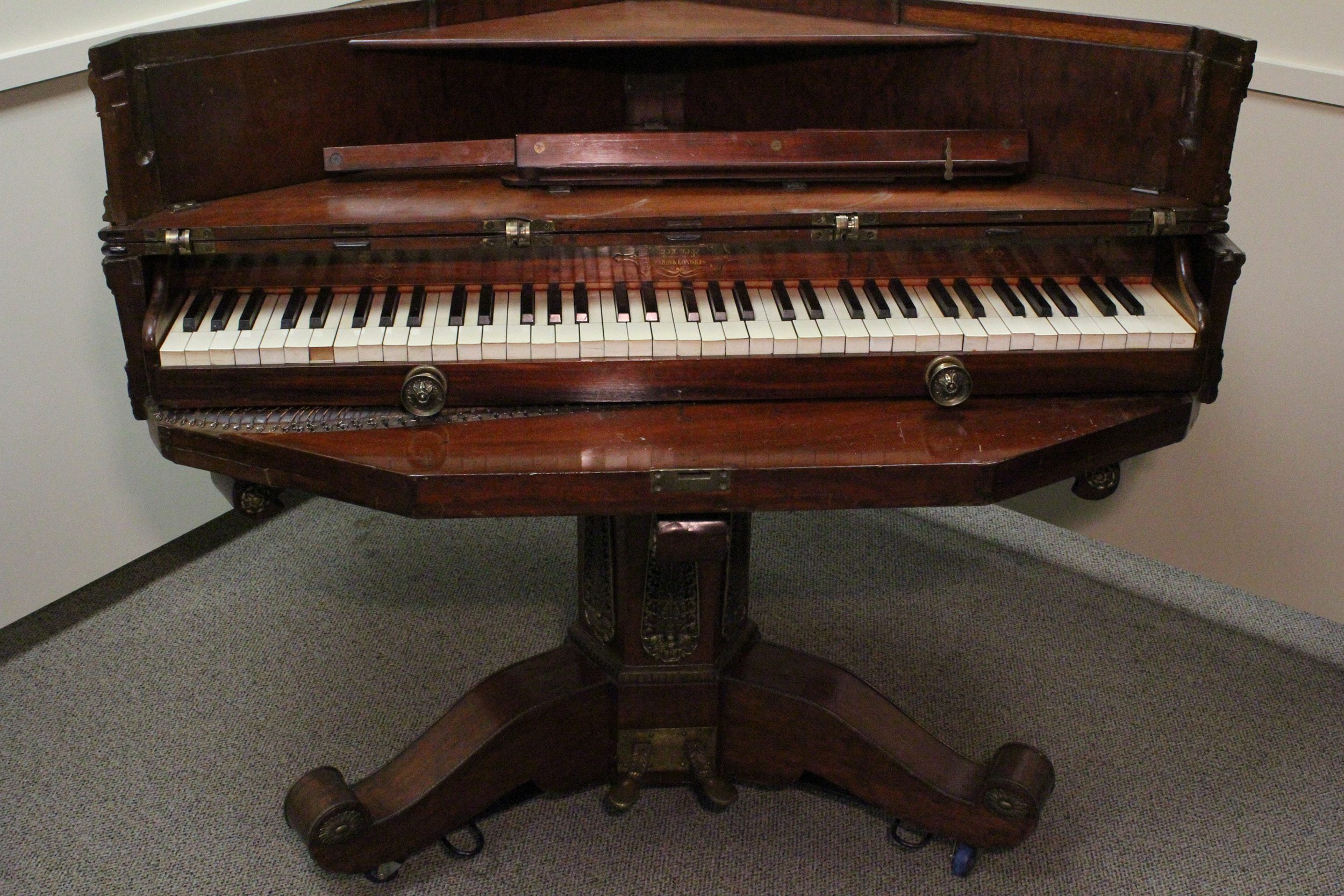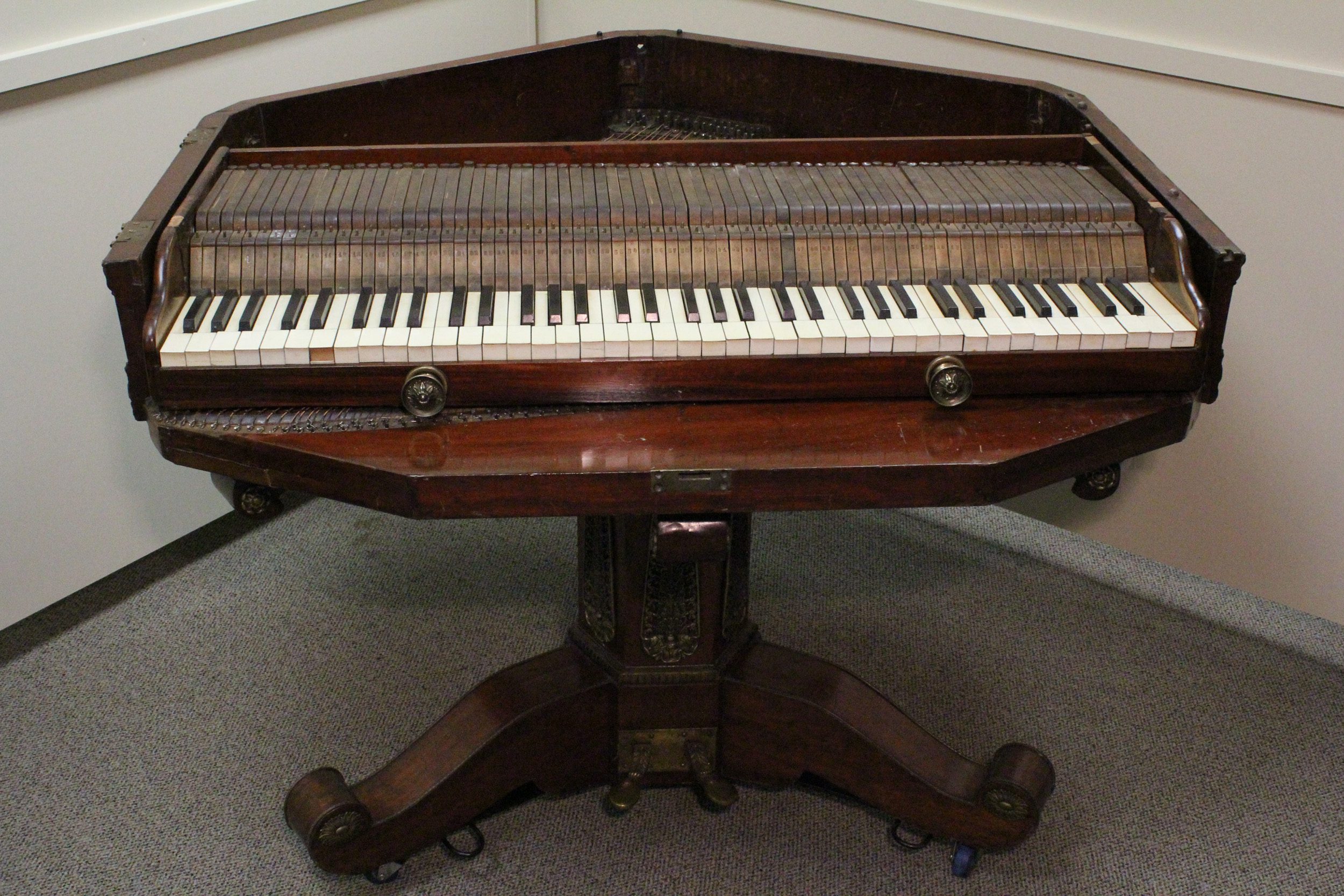Jean-Henri Pape was born in Germany in 1789, and migrated to Paris in 1811, where he initially worked as a manager at the Pleyel factory for a few years. He set up his own business in 1815, and became a very prominent piano manufacturer during the middle of the 19th century. He was renowned as an innovator and inventor, and is best known for having been the first to cover hammers with felt rather than leather.
Pape was obsessed for most of his life with the development of a downward striking mechanism for both square and grand pianos. He believed that this was a far better design, as it eliminated the need for the gap between the soundboard and the pin block, making the piano more sound structurally, and allowing for longer strings and a larger soundboard area in the same sized piano. The soundboard and strings could be placed toward the bottom of the case, rather than toward the top, giving additional structural strength. Pape worked his whole life experimenting with action designs, using springs to return the hammers to rest, trying to make it function as well as the standard upward striking designs.
Making pianos in the shape of furniture was one of Pape’s specialties, and our piano is one of many shapes he explored. He also pushed the limits of the compass of the piano to the extreme, making pianos with a range of eight octaves and more in the 1830s and 40s.







